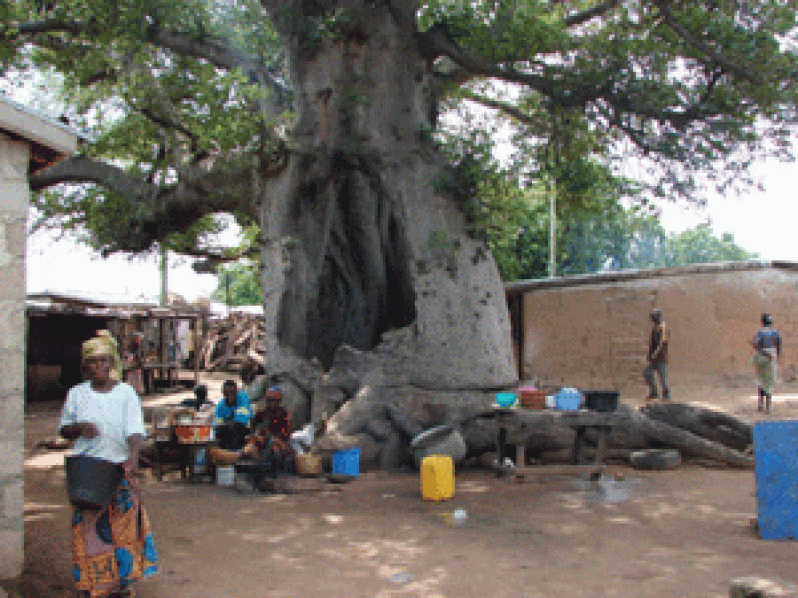Legends of the Baobab
LEGEND and folklore abound in areas where Baobab trees have a natural habitat. These legends and tales of folklore are fuelled by the longevity of this miracle tree, which has a lifespan of 5,000 years.
Angering the Gods
One African legend tells that the Baobab was amongst the first trees to appear on Earth. When the palm tree, the flame tree and the fig tree appeared, the Baobab began to grumble that it wanted to be taller than those, and to have brilliant, flame-coloured flowers and bear tasty fruit as well. The Gods, growing angry at this incessant wailing, pulled up the Baobab by its roots, and replanted in upside down to keep it quiet!
The ghostly python
One gigantic Baobab in Zambia is said to be haunted by a ghostly python. Legend has it that before the White Man came, a large python lived in the hollow trunk and was worshipped by the local natives. When they prayed for rain, fine crops and good hunting, the python answered their prayers. The first white hunter that came shot the python, and this event led to disastrous consequences. On still nights, the natives claim to hear a continuous hissing sound emanating from the old tree.
Eater of maidens
One of the largest Baobabs in the Kafue National Park in Zambia is known as ‘Kondanamwali’ – the tree that eats maidens. Legend has it that this enormous tree fell in love with four beautiful girls who lived in its shade, but when they reached puberty, they sought husbands and made the tree jealous. One night, during a raging thunderstorm, the tree opened its trunk and took the maidens into a rest house that had been built in the branches of the tree. On stormy nights, it is the crying of those imprisoned maidens that make people inside tremble – not the sounds of the wild animals.
Befriend the tree
Some people believe that if you pick a flower from a Baobab tree, you will be eaten by a lion; but if you drink water in which a Baobab’s seeds have been soaked, you will be safe from crocodile attack. Certain tribes in the Transvaal wash baby boys in water soaked in the bark of a Baobab in order to make them grow up mighty and strong, like the Baobab.
Exceptional in life and death
Many references have made mention of the exceptional vitality of the Baobab tree, noting that even after the entire tree has been cut down, it simply re-sprouts from the root, and continues to grow. The same is noted of those trees that have been blown over in storms.
Despite its remarkable vitality, when the Baobab dies, it collapses into a heap of soggy, fibrous pulp. Stories exist of how such quickly decomposing trees spontaneously combust and get completely burnt up, the sure sign of magic to the people nearby.
Reservoir
Baobab trees are not really tall, but mostly squat, which makes people regard them as ugly. They almost all have a hollow base. It has been recorded that in some cases, the centre of the tree is purposely hollowed out to serve as a reservoir for collecting water during the rainy season. The clefts of the large branches are used to collect rainwater, forming a valuable reservoir for local people of dry, arid regions. Large Baobab trees can contain more than 30,000 gallons of water.



.jpg)








